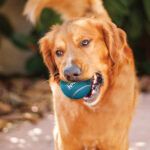
Winter can be magical with its snowy landscapes, but it also presents unique challenges for our furry friends, especially when it comes to paw care. Just like humans need extra care during the colder months, dogs require special attention to keep their paws healthy and comfortable. Here’s a comprehensive guide on how to take care of your dog’s paws during winter.
Understanding Winter Paw Problems
Before we jump into tips, it’s important to understand the common issues that can affect your dog’s paws during the winter:
- Dry, Cracked Paw Pads: The cold, dry air combined with exposure to ice and snow can lead to dry, cracked paw pads, causing discomfort and pain.
- Irritation from De-Icing Chemicals: De-icing chemicals can irritate your dog’s paws and are toxic if ingested.
- Ice Ball Formation: Snow and ice can accumulate between the paw pads, forming painful ice balls.
- Frostbite: Dogs, especially those with short fur, are susceptible to frostbite on their paws in extremely cold temperatures.
- Slipping and Injuries: Icy surfaces can increase the risk of slipping and injuring the paws or legs.
Tips for Winter Paw Care
1. Regularly Check Your Dog’s Paws
During winter, it’s crucial to frequently check your dog’s paws for signs of dryness, cracking, or irritation. Look for any redness, swelling, or cuts. Catching issues early can prevent them from becoming more serious.
2. Trim the Fur Between Paw Pads
Keeping the fur between your dog’s paw pads trimmed helps prevent ice and snow from accumulating and forming ice balls. Use a pair of pet-safe scissors and be careful not to cut the skin.
3. Use Pet-Friendly, Non-Toxic Ice Melts
If you use ice melt around your home, ensure it is pet-friendly and non-toxic. Traditional de-icing chemicals can cause significant irritation to your dog’s paws and are harmful if ingested.
4. Consider Using Dog Booties
Dog booties provide excellent protection for your dog’s paws during extended outdoor activities. They help prevent direct contact with ice, snow, and harmful chemicals. Make sure to choose booties that fit well and are comfortable for your dog.
5. Wash and Dry Your Dog’s Paws After Walks
After every walk, wash and thoroughly dry your dog’s paws. This step removes any salt, ice, or chemicals that could cause irritation. Use warm water and a mild dog-safe soap, then gently towel dry each paw.
6. Moisturize with Pet-Safe Paw Wax or Balm
To prevent your dog’s paw pads from becoming too dry, regularly apply a pet-safe paw wax or balm. These products help moisturize and protect the pads from harsh winter conditions. Make sure to use a product specifically formulated for dogs.
Detailed Steps for Each Tip
Checking Your Dog’s Paws
Regular inspections are key during winter. Follow these steps:
- Examine the Paw Pads: Look for any cracks, cuts, or signs of dryness.
- Check Between the Toes: Ensure there are no ice balls or debris lodged between the toes.
- Monitor for Redness or Swelling: These can be signs of irritation or infection.
Trimming Fur Between Paw Pads
Trimming the fur helps prevent ice ball formation. Here’s how:
- Gather Your Tools: Use a pair of pet-safe scissors and a comb.
- Comb the Fur: Gently comb the fur between the paw pads to separate it.
- Trim Carefully: Trim the fur level with the paw pads, avoiding the skin.
Using Pet-Friendly Ice Melts
Many traditional ice melts contain chemicals harmful to pets. Instead, opt for pet-safe alternatives:
- Purchase Pet-Safe Ice Melt: Look for products labeled as pet-friendly.
- Apply as Needed: Use the ice melt according to the manufacturer’s instructions around your home.
Using Dog Booties
Dog booties can be a lifesaver in winter. To use them effectively:
- Choose the Right Size: Measure your dog’s paws and select booties that fit snugly but comfortably.
- Introduce Gradually: Allow your dog to get used to the booties indoors before venturing outside.
- Secure Properly: Ensure the booties are securely fastened so they don’t slip off.
Washing and Drying Paws After Walks
Ensuring clean paws reduces the risk of irritation. Follow these steps:
- Prepare a Basin of Warm Water: Add a small amount of mild dog-safe soap.
- Wash Each Paw: Gently wash each paw, focusing on the pads and between the toes.
- Rinse Thoroughly: Make sure to rinse off all soap.
- Dry Completely: Use a soft towel to dry the paws thoroughly.
Moisturizing with Paw Wax or Balm
Regular moisturizing keeps paw pads healthy. Here’s how:
- Choose a Pet-Safe Product: Select a paw wax or balm specifically formulated for dogs.
- Apply to Clean Paws: Apply the product to clean, dry paws.
- Massage In: Gently massage the wax or balm into the paw pads until fully absorbed.
Additional Tips for Winter Paw Care
- Keep Walks Short: In extremely cold weather, keep walks short to minimize exposure to the elements.
- Protective Clothing: Consider using a dog coat or sweater to keep your dog warm.
- Avoid Metal Surfaces: Metal can become extremely cold and cause injury to your dog’s paws.
- Hydration: Ensure your dog stays hydrated, as proper hydration helps maintain skin and pad health.
Conclusion
Winter can be tough on your dog’s paws, but with a little extra care and attention, you can keep them healthy and comfortable. By regularly checking and cleaning your dog’s paws, using protective booties, and applying moisturizing products, you can prevent common winter paw problems. Remember, a little prevention goes a long way. If you notice persistent issues, consult your veterinarian for advice.









